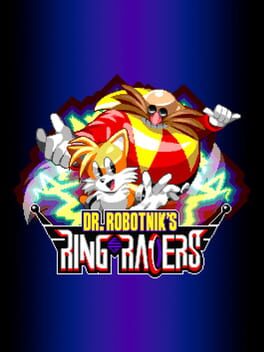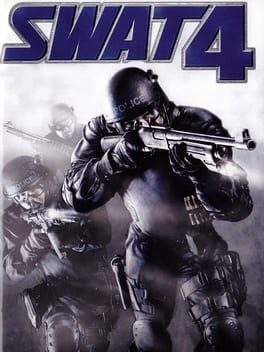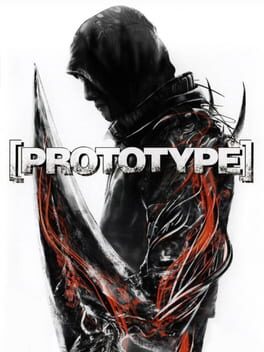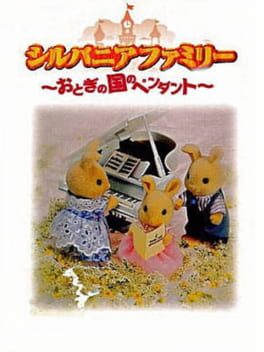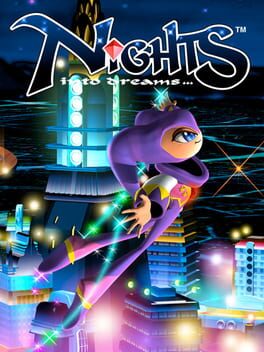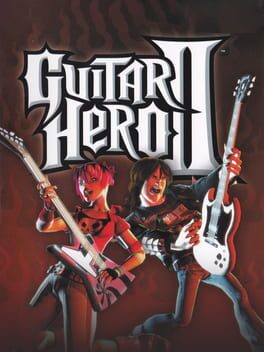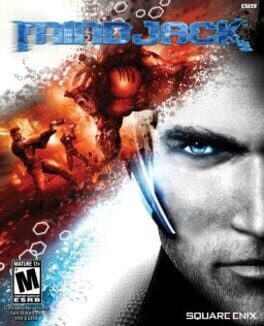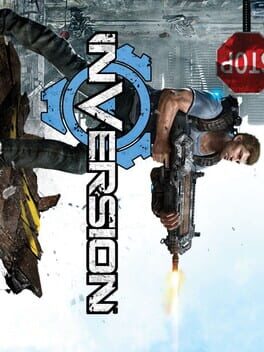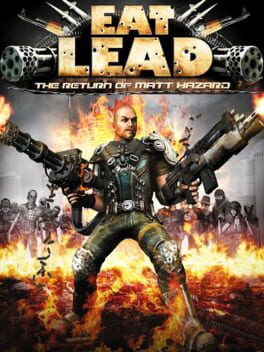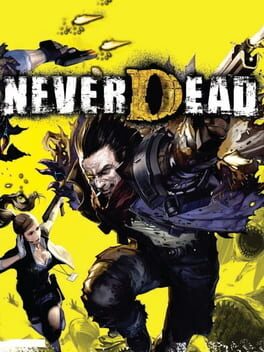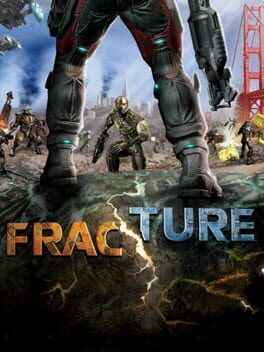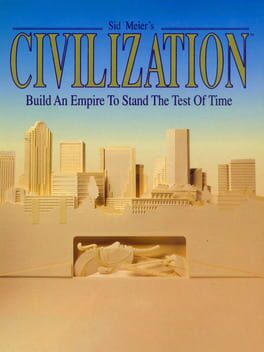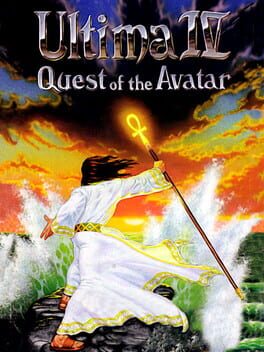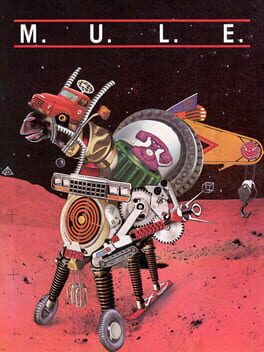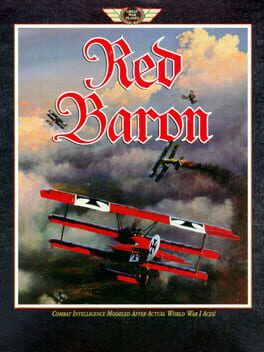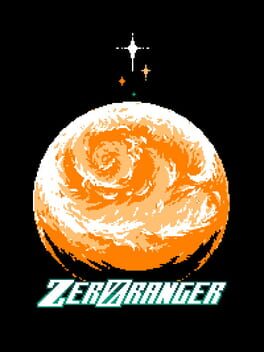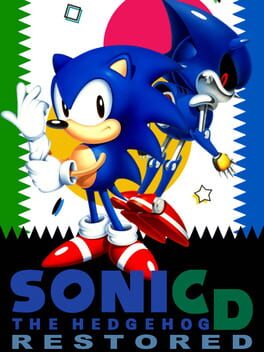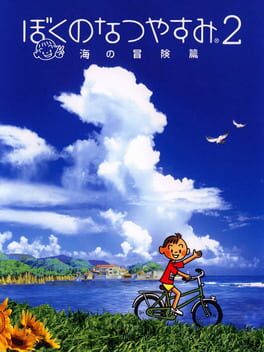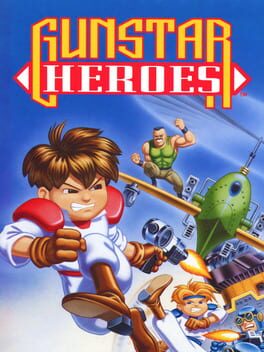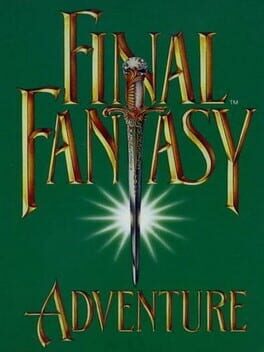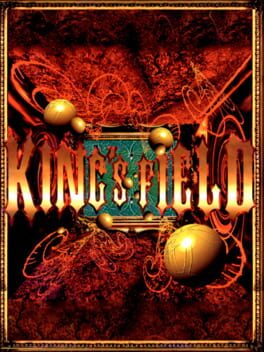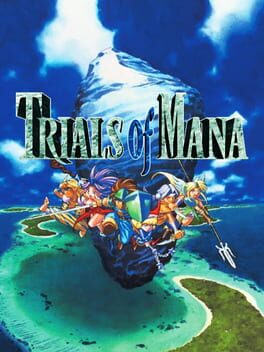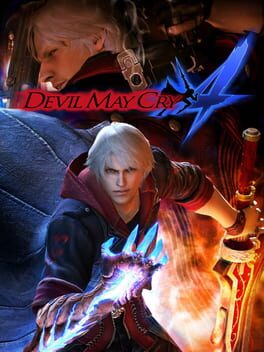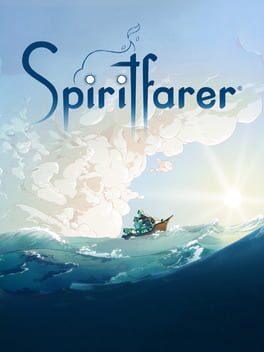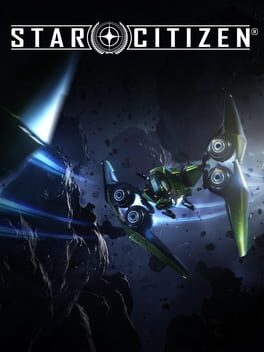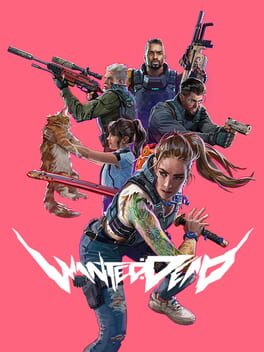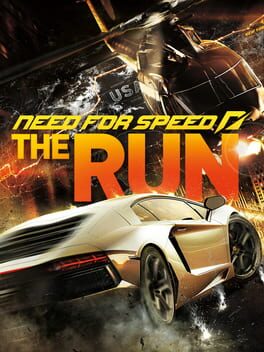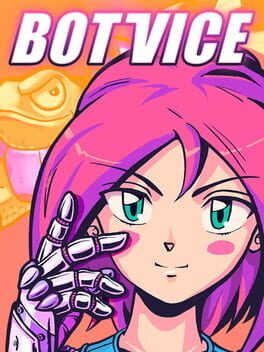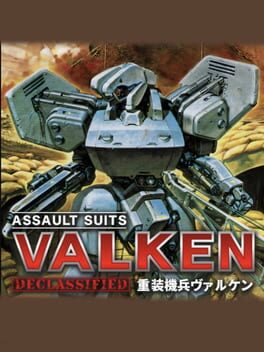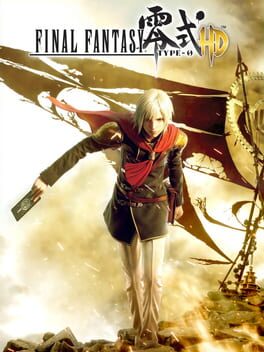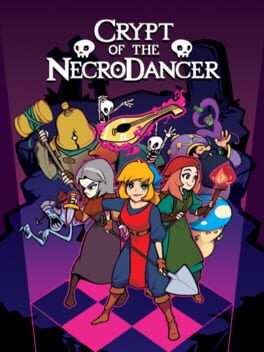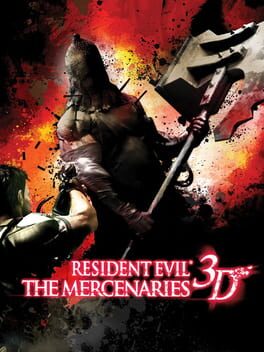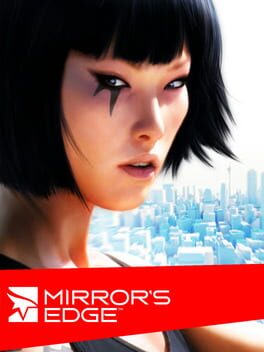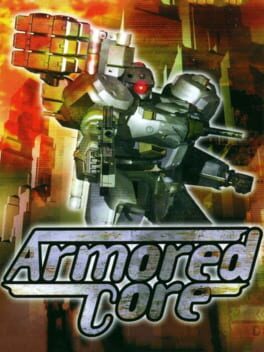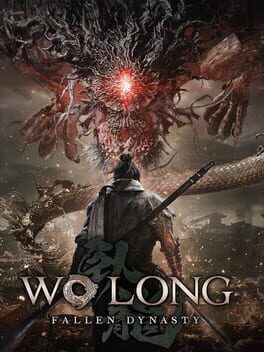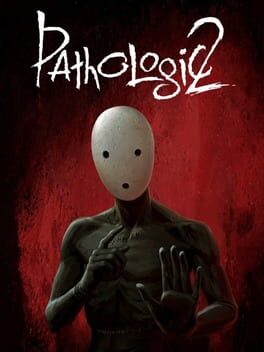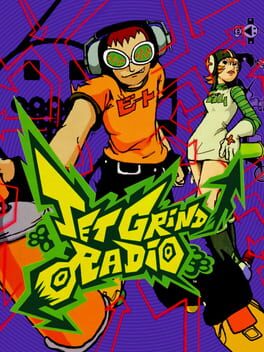Yeahlookiehere
1017 reviews liked by Yeahlookiehere
What I can never fault Ring Racers for is its ambition. Its environments are lovely, well realized, and expand on familiar Sonic zones and trappings in a way that accentuates every single track. It's a mechanically rich game with a bunch of different systems to compensate for every idea it has. It loads you with objectives and a glut of content that is mind boggling to begin to tackle. In all senses, it is a love letter to the legacy of Sonic and the fan game community that has sprung up around him, and takes every opportunity to remind you of its fan game status that it absolutely relishes. As a celebration and collection, Ring Racers is absolutely sublime.
Getting there tends to be the trickier issue. Much has been said about the game's intro, and while I find the dialogue and overall presentation of the tutorial very charming, I do find it a very misguided intro to the game. The mechanics taught in the tutorial are often used very sparingly across the actual races, and even those used often like drifting are used in different, shorter-form contexts than the tutorial would imply. It practically posits Ring Racers as an entirely different game and experience compared to what it actually is, and it goes on doing that for quite a while!
The actual races themselves vary in quality drastically depending on the track layout. Ring Racers can be absolutely vicious with its track designs, with hazards feeling devastating as they can easily combo into other hazards or items that toss you around like a pinball. This can be DEVASTATING on slopes, which require Sonic's vaunted momentum to get up and are aided by the ring system, letting you increase your speed a little bit per ring used. This should present some level of risk/reward; do you use your rings on straightaways to burst ahead, or save them for slopes as a means of recovery to maintain position? Unfortunately, rings are plentiful to a fault, and computer opponents (ESPECIALLY your rival character) are want to use them whenever possible to ludicrous speed increases, so rings become less strategic unless you're specifically saving them for chaos emerald bonuses in Grand Prix standings and more "I hope this part of the track also has rings". And when it doesn't... well you have the spin dash to get you out of the worst of things, but it feels pretty rough.
Drifting is also highly committal compared to rings, meaning that all alternate forms of speed are just kinda secondary to the immediate allure of the rings, which do not have enough risk to them to make the immediate reward not always a pull. This is compounded by items, which use the same button as using rings and, thus, often get in the way of progress more often than they help, especially considering how avoidable most offensive items tend to be as they struggle to interact with the steep sloped terrain of Ring Racers! I feel that individual race courses struggle to decide if they want to play nice with Ring Racers' systems or want to struggle against them, and very few of them are properly in line with the expectations set by the tutorial. It makes for a very uneven experience where a single bad spill on the last lap is both really debilitating and could not be entirely your fault, with means of consistent recovery not entirely present as opponents can keep padding their lead with rings and the comeback items are either unweildy to use, especially in a bad headspace, or inaccurate.
There are moments where Ring Racers does put everything together. Zones like Emerald Coast, Withering Chateau, Opulence, Regal Ruin, and Joypolis show DRRR at its best, with a consistent sense of flow, opportunities to best use shortcuts, and a great feel for combining the drift and ring mechanics. But for every one of them, there's a Marble Garden just asking for the player to try and break it in two before it breaks them. It lacks the kindness of kart racers like Mario, fails to commit to its individual mechanics like F-Zero, and does not string its systems together in nearly as seamless away as Crash, Diddy Kong, or even other Sonic racing titles manage. Ring Racers is its own, unforgiving beast that I can't say I had a bad time with, but it feels a bit overtuned for all it wants to strive for; a love letter that needed an editor, but how do you say "turn down the passion?" I like and respect it, I'll come back to keep pecking away at its wide breadth of content. But man I STILL haven't unlocked Whisper and don't even have a clue on how to get her, and I sincerely hope she's in the character class I like otherwise I'm gonna be real sad.
Getting there tends to be the trickier issue. Much has been said about the game's intro, and while I find the dialogue and overall presentation of the tutorial very charming, I do find it a very misguided intro to the game. The mechanics taught in the tutorial are often used very sparingly across the actual races, and even those used often like drifting are used in different, shorter-form contexts than the tutorial would imply. It practically posits Ring Racers as an entirely different game and experience compared to what it actually is, and it goes on doing that for quite a while!
The actual races themselves vary in quality drastically depending on the track layout. Ring Racers can be absolutely vicious with its track designs, with hazards feeling devastating as they can easily combo into other hazards or items that toss you around like a pinball. This can be DEVASTATING on slopes, which require Sonic's vaunted momentum to get up and are aided by the ring system, letting you increase your speed a little bit per ring used. This should present some level of risk/reward; do you use your rings on straightaways to burst ahead, or save them for slopes as a means of recovery to maintain position? Unfortunately, rings are plentiful to a fault, and computer opponents (ESPECIALLY your rival character) are want to use them whenever possible to ludicrous speed increases, so rings become less strategic unless you're specifically saving them for chaos emerald bonuses in Grand Prix standings and more "I hope this part of the track also has rings". And when it doesn't... well you have the spin dash to get you out of the worst of things, but it feels pretty rough.
Drifting is also highly committal compared to rings, meaning that all alternate forms of speed are just kinda secondary to the immediate allure of the rings, which do not have enough risk to them to make the immediate reward not always a pull. This is compounded by items, which use the same button as using rings and, thus, often get in the way of progress more often than they help, especially considering how avoidable most offensive items tend to be as they struggle to interact with the steep sloped terrain of Ring Racers! I feel that individual race courses struggle to decide if they want to play nice with Ring Racers' systems or want to struggle against them, and very few of them are properly in line with the expectations set by the tutorial. It makes for a very uneven experience where a single bad spill on the last lap is both really debilitating and could not be entirely your fault, with means of consistent recovery not entirely present as opponents can keep padding their lead with rings and the comeback items are either unweildy to use, especially in a bad headspace, or inaccurate.
There are moments where Ring Racers does put everything together. Zones like Emerald Coast, Withering Chateau, Opulence, Regal Ruin, and Joypolis show DRRR at its best, with a consistent sense of flow, opportunities to best use shortcuts, and a great feel for combining the drift and ring mechanics. But for every one of them, there's a Marble Garden just asking for the player to try and break it in two before it breaks them. It lacks the kindness of kart racers like Mario, fails to commit to its individual mechanics like F-Zero, and does not string its systems together in nearly as seamless away as Crash, Diddy Kong, or even other Sonic racing titles manage. Ring Racers is its own, unforgiving beast that I can't say I had a bad time with, but it feels a bit overtuned for all it wants to strive for; a love letter that needed an editor, but how do you say "turn down the passion?" I like and respect it, I'll come back to keep pecking away at its wide breadth of content. But man I STILL haven't unlocked Whisper and don't even have a clue on how to get her, and I sincerely hope she's in the character class I like otherwise I'm gonna be real sad.
Heisei Pistol Show
2008
before i played this game i thought it was just a cheap and silly rpg maker game. ITS A LOW-BUDGET AND SILLY RPG MAKER GAME BUT GOD I WAS SO WRONG.
as a queer person who has fucked his vision of love during a horrible time of his life just to find some kind of relief or should i say {happiness} the storyline felt really touching in a way not other videogame has ever made me feel. i would never have thought this "kill bill but with a femboy" type of story would made me feel like this. and i cant really say i fully understand it. it feels too personal to do so. but everyone should experience this game in its life.
love is really a very complex thing.
as a queer person who has fucked his vision of love during a horrible time of his life just to find some kind of relief or should i say {happiness} the storyline felt really touching in a way not other videogame has ever made me feel. i would never have thought this "kill bill but with a femboy" type of story would made me feel like this. and i cant really say i fully understand it. it feels too personal to do so. but everyone should experience this game in its life.
love is really a very complex thing.
SWAT 4
2005
So above and beyond what a tactical police shooter would reasonably need to have in so many different areas that you wonder how it even came to be. SWAT 4 may sit at the top of the very narrow category of most anxiety-inducing simultaneous first and second person shooters with needlessly detailed environmental storytelling, but it’s led me to a much broader, more general thought – for how saturated and longstanding a genre it is, how much has what you can do with a shooter really been explored?
A few things about it bring this question to mind, but the main one for me’s its morale system. Each enemy and civilian has a different level of morale which affects how likely they are to surrender, pretend to surrender before pulling some kind of stunt or be nakedly noncompliant whenever you and your squad shout at them. By themselves, these kinds of reactions go a long way toward making it so that the player can never guess what’ll happen when they open any given door, but what takes this system to the next level is the sheer amount of factors which can affect it; whether they’re a group of trained gunman or a single inexperienced gangbanger, whether they’ve been stunned with some form of nonlethal attack, whether there are any hostages for them to take advantage of or hostiles to point you in the direction of, how many of you there are versus how many of them, how much damage they’ve sustained to each of their limbs and, my favourite, surprising them with warning shots. I’d never realised until playing this that hitting or missing a target in a shooter doesn’t necessarily have to be a dichotomy between success or failure – here, the latter can also be a tool for intimidation when Officer Backloggd User’s vocal chords aren’t cutting it alone. Firing a shotgun near someone’s feet to twist what’d normally be a failure state into something potentially advantageous extends past the fantasy of feeling like a Michael Mann character and gets the mind wondering about the uncapitalised potential of not just this genre, but others too. Why, for instance, do RPGs still often limit us to dialogue boxes labelled (Intimidate) or whatever when a far more organic implementation of that sort of interaction’s right here?
This sort of unpredictability which causes each attempt at the same level to play out differently every time’s a specialty of SWAT 4. Choosing different entry points coupled with NPCs’ semi-randomised spawns contribute a fair amount to this too, especially when specific characters are part of the mission’s objectives in some way, though the fact that the aforementioned limb-based damage system also applies to you and your squad plays a large role as well. While the extent to which this game wants you to take it slow’s immediately felt in the pairing of its relatively low movement speed and how harshly guns’ crosshairs widen, it becomes even more apparent when you’ve got an injured leg, head or arm. Suddenly, you find yourself even more hesitant to attempt to follow a fleeing suspect through a series of doors they’re shutting behind them, and whatever strategies you had in mind when selecting your long-range equipment have been scuppered by your diminished accuracy. If it sounds restrictive, don’t worry, because it can open up about as many avenues of play as it can close; one example I particularly enjoyed involved clearing a mission which heavily encourages you to use nonlethal weaponry by instead aiming for unarmoured limbs with 9mm FMJ rounds, since it’s easier to skirt around score penalties by incapacitating hostiles rather than killing them.
Although there’s an easy comparison to be made in terms of the replayability of individual encounters with its contemporary F.E.A.R., down to how heavily this stems from the AI’s dynamic behaviours, there’s another, less expected parallel in how thickly it lays on all things atmospheric. Breaching a two-storey room filled with explosive canisters and over half a dozen heavily armed death cultists is nerve-wracking enough, then it decides to hit you with a scene like this just moments after. It’d be easy to think of moments like this or a much earlier, loose equivalent of VTMB’s Ocean House Hotel as borderline genre pivots, but they’re more tonally synergistic than they seem at first. This is a game in which you die in two clean hits regardless of difficulty, so much as taking your eye off a bodycam for a second can prove to be fatal and, as noted above, you can never fully anticipate what’s going to greet you on the other side of a door, so it makes sense to ensure that the player can never anticipate what’s up next on a conceptual level in addition to a mechanical one, as well as to occasionally dial up the horror and exacerbate the uneasiness that average Joes with Uzis are already so good at instilling.
Irrational’s prior experience with horror isn’t the only instance of their ancestry rearing its head in the least likely of places, either. If you weren’t aware that they originated by splintering off from Looking Glass, having played one of the first two Thief games prior to this will probably clue you in, because SWAT 4’s incomplete, often hand-drawn, hastily annotated maps are straight out of those. You can only ever make a rough mental approximation of the layout of wherever you’re about to raid because of it, and chances are it’ll have geographical changes, potential hazards or other objectives they can’t possibly account for. It’s a small but brilliant touch which makes every eruption of overlapping GET DOWNs and WHERE’S MY GODDAMN LAWYERs mixed with gunfire all the more hectic as you’re inevitably forced to piece together your own whereabouts in the thick of it, usually while juggling your own perspective with that of a squadmate’s bodycam or a sniper feed to boot.
Despite how spur-of-the-moment all of this makes it sound and how many different ingredients are packed into it, up to and including some of Eric Brosius’ funkiest work, SWAT 4’s really a game of exceptionally singular focus; as the objective menu puts it, restoring order to chaos. It’s felt even in the size of its levels, which are just right for how many moving parts they each have and the number of ways in which those parts can be manipulated – you can charge me on account of lying if I told you that it’s always fun hunting down the last remaining suspect regardless, but it is always intense, and in general the most minor of blemishes on what’s otherwise one of many attestations to the fact that we’d probably be grand if games had just stopped progressing past what they could do in 2005.
Keep your cool, fiddle with your squadmates’ equipment and make regular use of the command menu to breach whatever obstacles are between you and giving this game a try, boss.
A few things about it bring this question to mind, but the main one for me’s its morale system. Each enemy and civilian has a different level of morale which affects how likely they are to surrender, pretend to surrender before pulling some kind of stunt or be nakedly noncompliant whenever you and your squad shout at them. By themselves, these kinds of reactions go a long way toward making it so that the player can never guess what’ll happen when they open any given door, but what takes this system to the next level is the sheer amount of factors which can affect it; whether they’re a group of trained gunman or a single inexperienced gangbanger, whether they’ve been stunned with some form of nonlethal attack, whether there are any hostages for them to take advantage of or hostiles to point you in the direction of, how many of you there are versus how many of them, how much damage they’ve sustained to each of their limbs and, my favourite, surprising them with warning shots. I’d never realised until playing this that hitting or missing a target in a shooter doesn’t necessarily have to be a dichotomy between success or failure – here, the latter can also be a tool for intimidation when Officer Backloggd User’s vocal chords aren’t cutting it alone. Firing a shotgun near someone’s feet to twist what’d normally be a failure state into something potentially advantageous extends past the fantasy of feeling like a Michael Mann character and gets the mind wondering about the uncapitalised potential of not just this genre, but others too. Why, for instance, do RPGs still often limit us to dialogue boxes labelled (Intimidate) or whatever when a far more organic implementation of that sort of interaction’s right here?
This sort of unpredictability which causes each attempt at the same level to play out differently every time’s a specialty of SWAT 4. Choosing different entry points coupled with NPCs’ semi-randomised spawns contribute a fair amount to this too, especially when specific characters are part of the mission’s objectives in some way, though the fact that the aforementioned limb-based damage system also applies to you and your squad plays a large role as well. While the extent to which this game wants you to take it slow’s immediately felt in the pairing of its relatively low movement speed and how harshly guns’ crosshairs widen, it becomes even more apparent when you’ve got an injured leg, head or arm. Suddenly, you find yourself even more hesitant to attempt to follow a fleeing suspect through a series of doors they’re shutting behind them, and whatever strategies you had in mind when selecting your long-range equipment have been scuppered by your diminished accuracy. If it sounds restrictive, don’t worry, because it can open up about as many avenues of play as it can close; one example I particularly enjoyed involved clearing a mission which heavily encourages you to use nonlethal weaponry by instead aiming for unarmoured limbs with 9mm FMJ rounds, since it’s easier to skirt around score penalties by incapacitating hostiles rather than killing them.
Although there’s an easy comparison to be made in terms of the replayability of individual encounters with its contemporary F.E.A.R., down to how heavily this stems from the AI’s dynamic behaviours, there’s another, less expected parallel in how thickly it lays on all things atmospheric. Breaching a two-storey room filled with explosive canisters and over half a dozen heavily armed death cultists is nerve-wracking enough, then it decides to hit you with a scene like this just moments after. It’d be easy to think of moments like this or a much earlier, loose equivalent of VTMB’s Ocean House Hotel as borderline genre pivots, but they’re more tonally synergistic than they seem at first. This is a game in which you die in two clean hits regardless of difficulty, so much as taking your eye off a bodycam for a second can prove to be fatal and, as noted above, you can never fully anticipate what’s going to greet you on the other side of a door, so it makes sense to ensure that the player can never anticipate what’s up next on a conceptual level in addition to a mechanical one, as well as to occasionally dial up the horror and exacerbate the uneasiness that average Joes with Uzis are already so good at instilling.
Irrational’s prior experience with horror isn’t the only instance of their ancestry rearing its head in the least likely of places, either. If you weren’t aware that they originated by splintering off from Looking Glass, having played one of the first two Thief games prior to this will probably clue you in, because SWAT 4’s incomplete, often hand-drawn, hastily annotated maps are straight out of those. You can only ever make a rough mental approximation of the layout of wherever you’re about to raid because of it, and chances are it’ll have geographical changes, potential hazards or other objectives they can’t possibly account for. It’s a small but brilliant touch which makes every eruption of overlapping GET DOWNs and WHERE’S MY GODDAMN LAWYERs mixed with gunfire all the more hectic as you’re inevitably forced to piece together your own whereabouts in the thick of it, usually while juggling your own perspective with that of a squadmate’s bodycam or a sniper feed to boot.
Despite how spur-of-the-moment all of this makes it sound and how many different ingredients are packed into it, up to and including some of Eric Brosius’ funkiest work, SWAT 4’s really a game of exceptionally singular focus; as the objective menu puts it, restoring order to chaos. It’s felt even in the size of its levels, which are just right for how many moving parts they each have and the number of ways in which those parts can be manipulated – you can charge me on account of lying if I told you that it’s always fun hunting down the last remaining suspect regardless, but it is always intense, and in general the most minor of blemishes on what’s otherwise one of many attestations to the fact that we’d probably be grand if games had just stopped progressing past what they could do in 2005.
Keep your cool, fiddle with your squadmates’ equipment and make regular use of the command menu to breach whatever obstacles are between you and giving this game a try, boss.
Like the deck building structure but the fact battles have no actual player interaction means the game's one big grindy trial and error against walls of generic enemies with no storytelling, no exploration, no customization, none of the sauce that makes a BN game a BN game. Feel like there's so many better ways they could've handled this core conceit.
Prototype
2009
(JP-only but I hear there is a good fan translation!)
They (the company making the massively famous (in Japan) Sylvanian Family line of children's toys) made a GBC Moon Remix RPG-like for girls. I found about this by going to a random toy/game store in Shinjuku the other day. I ran into a friend visiting from Northern America, he pointed out the place's stock seemed to have renewed from a week ago.
He pointed out a giant stand that was filled with perfect condition GBA/GBC/Virtual Boy games: someone probably found an unopened shipping box sitting in some warehouse and sold it to this store. In it were various games - Telefang, Sanrio Timenet (all pokemon-likes), hamster-raising games... an interesting reminder of the diversity of that era. Lots of amazing (and mediocre lol) art and games.
But this one, Sylvanian Family caught my eye...
The art and setting make it charming enough: it's set in one of those "far off villages across countless mountains," kind of a idyllic, maybe Christian-y kind of fairy tale world. I wouldn't be surprised if there was some story behind whoever created this line of toys and branding: it has a strange innocence to it (https://www.google.com/search?q=sylvanian+family).
You have free reign each day to explore where you want, you're only limited by the need to be back home by 5 PM ... or else! You die!
Actually... the day is considered a "dream" and you just reload your previous save.
Each morning you're forced to greet your parents before leaving. Between that and the curfew there's something very childhood-y, strict, proper, about it.
But alongside that, as you explore more, find things, complete minigames... you'll level up, which gives you more stamina to explore for longer. (Hence the MOON comparison). I feel like you'll find yourself thinking about wherever it was you grew up, and how big it felt as a kid vs. now.
As you level up, time literally slows down. It's a neat way to make you feel like the character is somehow growing older and more experienced as you get more time to wander each day. Eventually you can make your way out to some mountains and get lost in a surprisingly stark-feeling system of caves that feels out of a pokemon or dragon quest dungeon. Of course, you'll always emerge safely out of the other side.
The level design has a nice variety: you mostly wander small mazes of trees or bushes looking for items to pick up, but they still feel distinct. The winding gardens of the city, the open meadows of the grassland, the confusing forests of the mountain. They're simple mazes but it works for the game.
Fast-travel holes emerge in the ground: I felt this kind of contradicted the power of the 'time slowing' leveling system.
Before the advent of crafting systems and these kinds of games being almost entirely about making small children develop compulsive-level collecting and building habits (see recent animal crossing or like, Fantasy Life), these kids adventure games were pretty tight experiences.
Sylvanian Families even has a furniture buying/placement system, but there are so few items and options that it feels more like a Harvest Moon-esque progression where you just get to occasionally change your home.
Funnily enough, the items you buy are literally real toys that kids could buy at the time. Those sly branding marketers! There's a cuteness to some of the items: a piano in which you can practice at and get better each day. A house upgrade which will surprise your dad who usually only ever tells you to not come back too late.
I'm reminded of 1998's Dokidoki Poyacchio (https://www.youtube.com/watch?v=msjpAsvJ5XU) which I somehow haven't logged here yet), or 2001's Uki-uki Carnival (I still have the only review here! Who do I have to pay to get this translated... https://www.backloggd.com/games/sakura-momoko-no-ukiuki-carnival/ ).
Ultimately Sylvanian Family doesn't reach the experimental highs of either of those games - but it's still a well-designed experience that stands on its own and establishes an enjoyable fantasy setting, and manages to do a lot with its stamina system, relatively sparse dialogue and events. Curious to see what the rest of the series holds.
Also the music bangs https://downloads.khinsider.com/game-soundtracks/album/sylvanian-families-otogi-no-kuni-no-pendant-1999-gbc/17%2520BGM%2520%252317.mp3
They (the company making the massively famous (in Japan) Sylvanian Family line of children's toys) made a GBC Moon Remix RPG-like for girls. I found about this by going to a random toy/game store in Shinjuku the other day. I ran into a friend visiting from Northern America, he pointed out the place's stock seemed to have renewed from a week ago.
He pointed out a giant stand that was filled with perfect condition GBA/GBC/Virtual Boy games: someone probably found an unopened shipping box sitting in some warehouse and sold it to this store. In it were various games - Telefang, Sanrio Timenet (all pokemon-likes), hamster-raising games... an interesting reminder of the diversity of that era. Lots of amazing (and mediocre lol) art and games.
But this one, Sylvanian Family caught my eye...
The art and setting make it charming enough: it's set in one of those "far off villages across countless mountains," kind of a idyllic, maybe Christian-y kind of fairy tale world. I wouldn't be surprised if there was some story behind whoever created this line of toys and branding: it has a strange innocence to it (https://www.google.com/search?q=sylvanian+family).
You have free reign each day to explore where you want, you're only limited by the need to be back home by 5 PM ... or else! You die!
Actually... the day is considered a "dream" and you just reload your previous save.
Each morning you're forced to greet your parents before leaving. Between that and the curfew there's something very childhood-y, strict, proper, about it.
But alongside that, as you explore more, find things, complete minigames... you'll level up, which gives you more stamina to explore for longer. (Hence the MOON comparison). I feel like you'll find yourself thinking about wherever it was you grew up, and how big it felt as a kid vs. now.
As you level up, time literally slows down. It's a neat way to make you feel like the character is somehow growing older and more experienced as you get more time to wander each day. Eventually you can make your way out to some mountains and get lost in a surprisingly stark-feeling system of caves that feels out of a pokemon or dragon quest dungeon. Of course, you'll always emerge safely out of the other side.
The level design has a nice variety: you mostly wander small mazes of trees or bushes looking for items to pick up, but they still feel distinct. The winding gardens of the city, the open meadows of the grassland, the confusing forests of the mountain. They're simple mazes but it works for the game.
Fast-travel holes emerge in the ground: I felt this kind of contradicted the power of the 'time slowing' leveling system.
Before the advent of crafting systems and these kinds of games being almost entirely about making small children develop compulsive-level collecting and building habits (see recent animal crossing or like, Fantasy Life), these kids adventure games were pretty tight experiences.
Sylvanian Families even has a furniture buying/placement system, but there are so few items and options that it feels more like a Harvest Moon-esque progression where you just get to occasionally change your home.
Funnily enough, the items you buy are literally real toys that kids could buy at the time. Those sly branding marketers! There's a cuteness to some of the items: a piano in which you can practice at and get better each day. A house upgrade which will surprise your dad who usually only ever tells you to not come back too late.
I'm reminded of 1998's Dokidoki Poyacchio (https://www.youtube.com/watch?v=msjpAsvJ5XU) which I somehow haven't logged here yet), or 2001's Uki-uki Carnival (I still have the only review here! Who do I have to pay to get this translated... https://www.backloggd.com/games/sakura-momoko-no-ukiuki-carnival/ ).
Ultimately Sylvanian Family doesn't reach the experimental highs of either of those games - but it's still a well-designed experience that stands on its own and establishes an enjoyable fantasy setting, and manages to do a lot with its stamina system, relatively sparse dialogue and events. Curious to see what the rest of the series holds.
Also the music bangs https://downloads.khinsider.com/game-soundtracks/album/sylvanian-families-otogi-no-kuni-no-pendant-1999-gbc/17%2520BGM%2520%252317.mp3
Buckshot Roulette
2023
"I believe our role as game creators is to give dreams to children all over the world." - Yuji Naka
------------------------------------------------------------------------
NiGHTS: Into Dreams is a marvel of a game. Originally developed with the intent of being a 2D game with pixel art graphics with a strong emphasis on Artificial Life sim (A-Life) gameplay, development shifted drastically towards the game we know today. The game was, for all intents and purposes, an experiment: can Sonic Team make a 3D game on the Sega Saturn? What are the limitations, if they could? How can they show the player 3D depth on a 2D screen? Can they create polygonal characters that look as appealing as 2D pixel characters?
The answer was a resounding yes. NiGHTS became a unique title that showcased the potential of the Sega Saturn, demolishing the sales and becoming the top selling game on the system. Sonic Team managed to create a new IP, play around with new ideas, and recharge their creative batteries from creating three or four Sonic game for the past four to five years.
But the reality of NiGHTS's release was that the game was not enough of a draw for the Saturn. The American consumer base desired more of the blue blur, and during consumer questioning with the Japanese side, kids infamously could only mutter "Sonic who?" when asked who Sonic was. Sonic was Sega's face, and Sega's face went missing.
-----------------------------------------------------------------------
Between the cracks of the conscious and unconscious, there is a rift that trickles down to Nightopia. Windmills stand atop of pillars that hover aimlessly in the air, decorating the milky blue and purple skies like ornaments of a Christmas tree. Hills and valleys roll in a green mellow stream, spreading across every corner within the canvas of this dream. Sleep is a one way ticket to the carnival of dreams, performing all of humanity's unconscious thoughts and ideals in one place. NiGHTS is your guide, a being that's a culmination of every culture and gender, staving off the nightmares that infest the dreams of the collective unconscious, displaying as a hero amongst the self. Waking is your ticket back to reality, where you're left with your memories of that dream world, giving you the strength to reach out for your dreams in reality.
------------------------------------------------------------------------
Much like Sonic, NiGHTS is the king of fostering replayability. NiGHTS is essentially a prototype for the ranking system that would later be found in the Sonic Adventure series. Rank is based not how fast you proceed through a level, but more determined with the amount of points you received and orbs you collect throughout the allotted route. Each world is broken up by 4 routes, followed by a climatic boss fight to cap off your overall ranking. Mastering the game requires mastering a level's layout, learning the best way to acquire points and orbs, and optimizing your run to perfection. Your verbs are to loop, charge and fly to reach your goal, the motions in doing so feeling eloquent and refined like a figure skater's flow. This flow translates to gameplay and vice versa from one another.
The gameplay loop is addicting on an immediate level, and for me, has been more gratifying than playing and perfecting either SA1 or 2. The reason is simple: in Sonic, the qualifications to gain the best rank aren't actually clear with what the game is asking of you. Here in NiGHTS, it's 100% clear to me how I reach a better rank. The more points I wrack up, the better my rank.
For all of NiGHTS, there's a sense of clarity to the game design with how simplistic and creative it is. I'm not sure Sonic Team has ever quite reached such a level of clarity with their other projects.
------------------------------------------------------------------------
The world was passing me by so quickly. My surroundings were hard to really notice at a first glance, so I began to grow dissatisfied being unable to soak anything in. So, I did what I used to do when I was younger. I let myself get lost in the world.
The ground swerved and bent like an ocean's wave. These waves would envelop me from above and below me, closing me within this world like an open cavern. Walking felt weird, like at any given moment I'd start feeling heavy resistance from the sheer steepness of the terrain, but never did that heavy foot come. I wandered around, finding tiny creatures that would playfully smile, or laugh, or spin with glee.
The world felt still, in a way. Like this was the only moment that mattered. Thinking back on this, I felt like I once did when I was a kid. The world in front of me felt strange, new and a little scary. I didn't know what to expect from the game, and that within itself was such a refreshing experience.
------------------------------------------------------------------------
Despite the fact that NiGHTS started as an attempt to create an A-Life game, aspects are still found within the free range mode within NiGHTS. Before every level starts, you have the option to head directly towards NiGHTS, or to explore the entire level in full. Inhabiting these dreamscapes are tiny little creatures known as Pians, whom are born from eggs that you can find and hatch. These tiny little fairy men come in many shapes and sizes, and even come equipped with a full on breeding system. This system isn't as in-depth as the Chao system found within Sonic Adventure 1 and 2, but this mechanic adds a strange and needed element to the gameplay loop: a moment to relax.
Taking a break from the fast paced gameplay and simply exploring the world here creates a sense of exploration and discovery. There's details to this world that you're merely flying past in the main portion of the game, and being able to explore the same level from a completely different perspective is strangely freeing. Of course, the game doesn't want you to just running around collecting orbs for free, so they add in a slight pressure from an egg strapped with an alarm clock that chases you, along with a lower rank for the amount of time you've spent, so the game ends up being balanced with this approach. These open ended sections truly breathe life into the world of Nightopia.
-----------------------------------------------------------------------
Ethereal synths move and sway from ear to ear, samples of children saying hello and every day noises floating in-between them. The sound of a sax screeching in mimicry of an a monster screeching as a bombastic drum 'n' bass and a groovin' bass line kick into full gear. As credits roll, you're treated to the sweetest songs ever conceived.
"In the night.
Dream delight.
I want to see you standing there.
In the night.
Dream delight.
I found someone who really cared."
--------------------------------------------------------------------------
The Sega Saturn was considered a commercial failure. Sonic X-Treme was canceled, and there was no recovery from the lack of momentum. The Dreamcast was Sega's last shot to regain their market share and their consumer base. But too many mistakes were made. Sega closed down their console divisions for good.
Their dream was no more.
------------------------------------------------------------------------
As an adult, you don't really have the opportunity to meander. We hold off on leaving the living because there's too much to be done. Responsibilities need to be taken care of, work obligations need to be met. Life can come at you fast, and you can never be sure if the move you're making is the right move. What do I want to do? Who do I want to be? When will I wake up from my fear of rejection, my fear of agency? The idea can often paralyze me. There's more I could be doing, more I could be aspiring towards.
NiGHTS: Into Dreams reminds me that there isn't a need to overcomplicated. Sometimes all you need is to focus on something simple. Take a deep breath and wander. Take a break but get back to it.
----------------------------------------------------------------------
The quote at the beginning was given in an interview with Yuji Naka and developers of NiGHTS: Into Dream. You might cringe at the cheese spewing out of every orifice of the lettering as you read the text, but the words hold weight for me. Despite everything Yuji Naka has done in his career, despite how notoriously difficult he was to work with said by those around him, despite the potential cynical business centric reasoning for this quote, NiGHTS: Into Dreams still encapsulates the feeling of magic into me. The game filled me with a wonder I don't think many games ever have. Just for a moment, I felt like I was a kid again, exploring a new, unknown game for the first time, wondering what this strange new world had in store for me. There was nothing but smiles of joy on my face.
This is me by the way, if you even care.
------------------------------------------------------------------------
NiGHTS: Into Dreams is a marvel of a game. Originally developed with the intent of being a 2D game with pixel art graphics with a strong emphasis on Artificial Life sim (A-Life) gameplay, development shifted drastically towards the game we know today. The game was, for all intents and purposes, an experiment: can Sonic Team make a 3D game on the Sega Saturn? What are the limitations, if they could? How can they show the player 3D depth on a 2D screen? Can they create polygonal characters that look as appealing as 2D pixel characters?
The answer was a resounding yes. NiGHTS became a unique title that showcased the potential of the Sega Saturn, demolishing the sales and becoming the top selling game on the system. Sonic Team managed to create a new IP, play around with new ideas, and recharge their creative batteries from creating three or four Sonic game for the past four to five years.
But the reality of NiGHTS's release was that the game was not enough of a draw for the Saturn. The American consumer base desired more of the blue blur, and during consumer questioning with the Japanese side, kids infamously could only mutter "Sonic who?" when asked who Sonic was. Sonic was Sega's face, and Sega's face went missing.
-----------------------------------------------------------------------
Between the cracks of the conscious and unconscious, there is a rift that trickles down to Nightopia. Windmills stand atop of pillars that hover aimlessly in the air, decorating the milky blue and purple skies like ornaments of a Christmas tree. Hills and valleys roll in a green mellow stream, spreading across every corner within the canvas of this dream. Sleep is a one way ticket to the carnival of dreams, performing all of humanity's unconscious thoughts and ideals in one place. NiGHTS is your guide, a being that's a culmination of every culture and gender, staving off the nightmares that infest the dreams of the collective unconscious, displaying as a hero amongst the self. Waking is your ticket back to reality, where you're left with your memories of that dream world, giving you the strength to reach out for your dreams in reality.
------------------------------------------------------------------------
Much like Sonic, NiGHTS is the king of fostering replayability. NiGHTS is essentially a prototype for the ranking system that would later be found in the Sonic Adventure series. Rank is based not how fast you proceed through a level, but more determined with the amount of points you received and orbs you collect throughout the allotted route. Each world is broken up by 4 routes, followed by a climatic boss fight to cap off your overall ranking. Mastering the game requires mastering a level's layout, learning the best way to acquire points and orbs, and optimizing your run to perfection. Your verbs are to loop, charge and fly to reach your goal, the motions in doing so feeling eloquent and refined like a figure skater's flow. This flow translates to gameplay and vice versa from one another.
The gameplay loop is addicting on an immediate level, and for me, has been more gratifying than playing and perfecting either SA1 or 2. The reason is simple: in Sonic, the qualifications to gain the best rank aren't actually clear with what the game is asking of you. Here in NiGHTS, it's 100% clear to me how I reach a better rank. The more points I wrack up, the better my rank.
For all of NiGHTS, there's a sense of clarity to the game design with how simplistic and creative it is. I'm not sure Sonic Team has ever quite reached such a level of clarity with their other projects.
------------------------------------------------------------------------
The world was passing me by so quickly. My surroundings were hard to really notice at a first glance, so I began to grow dissatisfied being unable to soak anything in. So, I did what I used to do when I was younger. I let myself get lost in the world.
The ground swerved and bent like an ocean's wave. These waves would envelop me from above and below me, closing me within this world like an open cavern. Walking felt weird, like at any given moment I'd start feeling heavy resistance from the sheer steepness of the terrain, but never did that heavy foot come. I wandered around, finding tiny creatures that would playfully smile, or laugh, or spin with glee.
The world felt still, in a way. Like this was the only moment that mattered. Thinking back on this, I felt like I once did when I was a kid. The world in front of me felt strange, new and a little scary. I didn't know what to expect from the game, and that within itself was such a refreshing experience.
------------------------------------------------------------------------
Despite the fact that NiGHTS started as an attempt to create an A-Life game, aspects are still found within the free range mode within NiGHTS. Before every level starts, you have the option to head directly towards NiGHTS, or to explore the entire level in full. Inhabiting these dreamscapes are tiny little creatures known as Pians, whom are born from eggs that you can find and hatch. These tiny little fairy men come in many shapes and sizes, and even come equipped with a full on breeding system. This system isn't as in-depth as the Chao system found within Sonic Adventure 1 and 2, but this mechanic adds a strange and needed element to the gameplay loop: a moment to relax.
Taking a break from the fast paced gameplay and simply exploring the world here creates a sense of exploration and discovery. There's details to this world that you're merely flying past in the main portion of the game, and being able to explore the same level from a completely different perspective is strangely freeing. Of course, the game doesn't want you to just running around collecting orbs for free, so they add in a slight pressure from an egg strapped with an alarm clock that chases you, along with a lower rank for the amount of time you've spent, so the game ends up being balanced with this approach. These open ended sections truly breathe life into the world of Nightopia.
-----------------------------------------------------------------------
Ethereal synths move and sway from ear to ear, samples of children saying hello and every day noises floating in-between them. The sound of a sax screeching in mimicry of an a monster screeching as a bombastic drum 'n' bass and a groovin' bass line kick into full gear. As credits roll, you're treated to the sweetest songs ever conceived.
"In the night.
Dream delight.
I want to see you standing there.
In the night.
Dream delight.
I found someone who really cared."
--------------------------------------------------------------------------
The Sega Saturn was considered a commercial failure. Sonic X-Treme was canceled, and there was no recovery from the lack of momentum. The Dreamcast was Sega's last shot to regain their market share and their consumer base. But too many mistakes were made. Sega closed down their console divisions for good.
Their dream was no more.
------------------------------------------------------------------------
As an adult, you don't really have the opportunity to meander. We hold off on leaving the living because there's too much to be done. Responsibilities need to be taken care of, work obligations need to be met. Life can come at you fast, and you can never be sure if the move you're making is the right move. What do I want to do? Who do I want to be? When will I wake up from my fear of rejection, my fear of agency? The idea can often paralyze me. There's more I could be doing, more I could be aspiring towards.
NiGHTS: Into Dreams reminds me that there isn't a need to overcomplicated. Sometimes all you need is to focus on something simple. Take a deep breath and wander. Take a break but get back to it.
----------------------------------------------------------------------
The quote at the beginning was given in an interview with Yuji Naka and developers of NiGHTS: Into Dream. You might cringe at the cheese spewing out of every orifice of the lettering as you read the text, but the words hold weight for me. Despite everything Yuji Naka has done in his career, despite how notoriously difficult he was to work with said by those around him, despite the potential cynical business centric reasoning for this quote, NiGHTS: Into Dreams still encapsulates the feeling of magic into me. The game filled me with a wonder I don't think many games ever have. Just for a moment, I felt like I was a kid again, exploring a new, unknown game for the first time, wondering what this strange new world had in store for me. There was nothing but smiles of joy on my face.
This is me by the way, if you even care.
Desync
2017
Kind of interesting how much the space of these years were really into the sort of Tron/FC3 Blood Dragon Cyberspace. I think it's kind of "fun" in the way any cotton candy town can be appealing and enjoyable. Now on replay it hurts my eyes every so often, almost intentionally with its awful and absolutely dire random tv-crt cuts.
And that sums up the experience, awful every so often in a disappointing way. When the overall work grabs you it can be genuinely incredible, with desyncing enemies and comboing sequences together to become an absolute fast-and-furious powerhouse that demolishes through tactile precision and great understandings of your gunplay fundamentals. Things like blowing up a stage bomb to turn a few slashing enemies into projectiles that you've conveniently pushed towards an increasingly large shuriken, getting a particular bonus you set up ahead of time, to then use the new speed to rocket up another set of enemies that you then laser point-blank underneath their hides for ANOTHER bonus.
And then the encounter is already over.
What?
Yeah, the game is honestly way too forgiving, way too easy. It's so afraid of throwing particular enemy combos at you or putting too much on you that even its second boss fight will go invulnerable and just stand there staring at you while you take care of a poultry wave first. The real meat is in its aberration challenges, but those kind of pull apart having your own "sandbox" to combo enemies in favor of a pre-determined affair. Which I do personally prefer, but it means that about 3/4 of whatever setup you do with the menuing means nothing if the weapons are different.
But, when you've accustomed to the game's own rhythm, they provide the closest Desync gets to pulling you apart in a very engaging way. When these hardmode levels take away your dash and force you to tactfully make your kills to get back HP before your meter runs out. When you're playing a weird game of "keep-away" with weapons that require getting at least a bit close to do proper damage, because the enemies now decided to explode on overkill. When you've got one hit to your name and a host of smaller enemies swarming on you and there's only ONE way you can stagger them to do damage in the first place.
It all helps that at the end of the day this is a very fun frictional shooter, with devs at a midway point where they don't give a shit what you think but also graft on a rpg-your-weapon modifications because that's a thing now. It's a team that lets you be able to make the final boss a multi-enemy one of your own volition and say "deal with it", and has the least accessibility for its nauseating interface. The moniker "adult swim games" has great meaning here, and that's pretty cool.
And that sums up the experience, awful every so often in a disappointing way. When the overall work grabs you it can be genuinely incredible, with desyncing enemies and comboing sequences together to become an absolute fast-and-furious powerhouse that demolishes through tactile precision and great understandings of your gunplay fundamentals. Things like blowing up a stage bomb to turn a few slashing enemies into projectiles that you've conveniently pushed towards an increasingly large shuriken, getting a particular bonus you set up ahead of time, to then use the new speed to rocket up another set of enemies that you then laser point-blank underneath their hides for ANOTHER bonus.
And then the encounter is already over.
What?
Yeah, the game is honestly way too forgiving, way too easy. It's so afraid of throwing particular enemy combos at you or putting too much on you that even its second boss fight will go invulnerable and just stand there staring at you while you take care of a poultry wave first. The real meat is in its aberration challenges, but those kind of pull apart having your own "sandbox" to combo enemies in favor of a pre-determined affair. Which I do personally prefer, but it means that about 3/4 of whatever setup you do with the menuing means nothing if the weapons are different.
But, when you've accustomed to the game's own rhythm, they provide the closest Desync gets to pulling you apart in a very engaging way. When these hardmode levels take away your dash and force you to tactfully make your kills to get back HP before your meter runs out. When you're playing a weird game of "keep-away" with weapons that require getting at least a bit close to do proper damage, because the enemies now decided to explode on overkill. When you've got one hit to your name and a host of smaller enemies swarming on you and there's only ONE way you can stagger them to do damage in the first place.
It all helps that at the end of the day this is a very fun frictional shooter, with devs at a midway point where they don't give a shit what you think but also graft on a rpg-your-weapon modifications because that's a thing now. It's a team that lets you be able to make the final boss a multi-enemy one of your own volition and say "deal with it", and has the least accessibility for its nauseating interface. The moniker "adult swim games" has great meaning here, and that's pretty cool.
Guitar Hero II
2006
Estimated read time: 6~ minutes.
I have terrible rhythm—I can synchronize, but that's about it—but I love this game. I practically can't beat Rhythm Heaven (might dive into that at some point), but I adore these tours and subpar live recording album-tier covers with completely nonsense maps that make the guitar play the piano, horns, etc.; not because it makes sense but because it's simply fun.
The intro goes incredibly hard. I think it perfectly represents the series as a whole. Even though Guitar Hero III is widely considered the best by a decent margin, I’m partial to II for its crust. Although one very nice feature starting here was they realized people were buying various types of RPTVs and plasmas, so they implemented a calibration screen to make the game playable in the new era of TVs with high latency (40+ms!!).
I’ve always had stage fright, particularly if it ever involved singing. Despite that, I walk through those venue doors, nervous and frankly embarrassed; social anxiety is a bitch. But my love was secretly listening to hard rock, metal, prog rock and metal, maybe a bit of trance here ‘n’ there. I Am here to enjoy some fucking music, meet fellow musicians, and hopefully grow as one.
You know what I found, though?
The fakest fuckers on the planet lamenting about not being popular enough or whatever. "What about me?" What about you? Another cold burnout song about how much everyone else sucks? Wow, how revelatory, you really shook up the scene today. I'm sure we'll quake in our boots at the idea of your sniggering, side-eyeing, nonchalant disregard and elitism leaving the venue and being laid to rest. I just want to play Guitar Hero for God’s sake!
Do you even understand fun? Talking about playing for the music, the esoterica and innate joy of it all, but it sure doesn't seem like it, not unless it's doing literally the same thing you decry the rest of the bands of doing: low effort punk rock with a bit of crass lyrics in there poisoned with irony, but then you make it worse by painting it with the veneer of artistic understanding and passion. Where is it? You seem content to hide it all up in a little heart-shaped box you’ve deemed only your little act worthy of being privy to.
Also, did you really have to do all that at karaoke night? Unplugging the amp and making a speech about it? Telling people they just don't get it and aren't singing for the right reasons? That punk night is dead! Do you even hear yourself? It's just some karaoke; get over yourself.
Go do your own tour or whatever; literally nobody asked you to leave, but I bet you’ll pretend you were kicked to the curb anyways. Showered in praise, yet you hyper-fixate on a couple of dissenters that pop up throughout the year? Who cares! The next set’s about to be played!
You were never here for the music, and it's no wonder you're completely and utterly obsessed with eras you were barely sentient for, or worse, not even around for. You can't get over the fact that time marches forward without you, someone new showing up one day and curb stomping you at your own act; it's humbling, but rather than take it on stride, you grimace, forcing a pained smile as you pat them on the back for performing so well. But it's clear that this was a massive blow to your ego. Maybe you can convince yourself it doesn't hurt so much if you only care about your fellow burnouts quitting emo and declaring the rest of the venue a madhouse.
It hurts, because I thought your act was pretty cool. I guess it’s pretty “punk rock” to jeer and give the cold shoulder though, right? Maybe it’s in spirit, maybe it’s hypocritical of me, whatever.
Throughout my musical journey it’s been nothing but revitalizing, igniting the flame once more for the medium I held so dear. I was berated and constantly mocked for my love of music, especially metal, combined with curve balls left and right, losing loved ones (or what few I would call those), I became very disillusioned with how people behave. It was branching out and stepping out of my comfort zone, keeping my chin up even in the face of pretentious acts that my love for music only grew more. Yeah, it sucked that some of my favorite bands became increasingly misanthropic, but why should that stop me? Why should it stop any of us? It was never about those assholes; it was about the music- their words, not mine. Well, their words until it was just about themselves. I’ll stop now, I’ve got a set to play whether or not people show up. It’ll probably be mediocre! I don’t care.
Punk rock never died. Don’t let the door hit you on the way out.
Goodnight.
Favorite track: The Sword - Freya
Unrelated music highlight: The Mothers of Invention (Live in London, ‘68)
I have terrible rhythm—I can synchronize, but that's about it—but I love this game. I practically can't beat Rhythm Heaven (might dive into that at some point), but I adore these tours and subpar live recording album-tier covers with completely nonsense maps that make the guitar play the piano, horns, etc.; not because it makes sense but because it's simply fun.
The intro goes incredibly hard. I think it perfectly represents the series as a whole. Even though Guitar Hero III is widely considered the best by a decent margin, I’m partial to II for its crust. Although one very nice feature starting here was they realized people were buying various types of RPTVs and plasmas, so they implemented a calibration screen to make the game playable in the new era of TVs with high latency (40+ms!!).
I’ve always had stage fright, particularly if it ever involved singing. Despite that, I walk through those venue doors, nervous and frankly embarrassed; social anxiety is a bitch. But my love was secretly listening to hard rock, metal, prog rock and metal, maybe a bit of trance here ‘n’ there. I Am here to enjoy some fucking music, meet fellow musicians, and hopefully grow as one.
You know what I found, though?
The fakest fuckers on the planet lamenting about not being popular enough or whatever. "What about me?" What about you? Another cold burnout song about how much everyone else sucks? Wow, how revelatory, you really shook up the scene today. I'm sure we'll quake in our boots at the idea of your sniggering, side-eyeing, nonchalant disregard and elitism leaving the venue and being laid to rest. I just want to play Guitar Hero for God’s sake!
Do you even understand fun? Talking about playing for the music, the esoterica and innate joy of it all, but it sure doesn't seem like it, not unless it's doing literally the same thing you decry the rest of the bands of doing: low effort punk rock with a bit of crass lyrics in there poisoned with irony, but then you make it worse by painting it with the veneer of artistic understanding and passion. Where is it? You seem content to hide it all up in a little heart-shaped box you’ve deemed only your little act worthy of being privy to.
Also, did you really have to do all that at karaoke night? Unplugging the amp and making a speech about it? Telling people they just don't get it and aren't singing for the right reasons? That punk night is dead! Do you even hear yourself? It's just some karaoke; get over yourself.
Go do your own tour or whatever; literally nobody asked you to leave, but I bet you’ll pretend you were kicked to the curb anyways. Showered in praise, yet you hyper-fixate on a couple of dissenters that pop up throughout the year? Who cares! The next set’s about to be played!
You were never here for the music, and it's no wonder you're completely and utterly obsessed with eras you were barely sentient for, or worse, not even around for. You can't get over the fact that time marches forward without you, someone new showing up one day and curb stomping you at your own act; it's humbling, but rather than take it on stride, you grimace, forcing a pained smile as you pat them on the back for performing so well. But it's clear that this was a massive blow to your ego. Maybe you can convince yourself it doesn't hurt so much if you only care about your fellow burnouts quitting emo and declaring the rest of the venue a madhouse.
It hurts, because I thought your act was pretty cool. I guess it’s pretty “punk rock” to jeer and give the cold shoulder though, right? Maybe it’s in spirit, maybe it’s hypocritical of me, whatever.
Throughout my musical journey it’s been nothing but revitalizing, igniting the flame once more for the medium I held so dear. I was berated and constantly mocked for my love of music, especially metal, combined with curve balls left and right, losing loved ones (or what few I would call those), I became very disillusioned with how people behave. It was branching out and stepping out of my comfort zone, keeping my chin up even in the face of pretentious acts that my love for music only grew more. Yeah, it sucked that some of my favorite bands became increasingly misanthropic, but why should that stop me? Why should it stop any of us? It was never about those assholes; it was about the music- their words, not mine. Well, their words until it was just about themselves. I’ll stop now, I’ve got a set to play whether or not people show up. It’ll probably be mediocre! I don’t care.
Punk rock never died. Don’t let the door hit you on the way out.
Goodnight.
Favorite track: The Sword - Freya
Unrelated music highlight: The Mothers of Invention (Live in London, ‘68)
54 lists liked by Yeahlookiehere
by JetSetSet |
23 Games
by EVX |
150 Games
by JordanResin |
35 Games
by Rhiwion |
108 Games
by DrDelicious |
5 Games
by LordDarias |
12 Games
by JohnHarrelson |
10 Games
by Pangburn |
32 Games
by HotPocketHPE |
18 Games
by Scamsley |
52 Games
